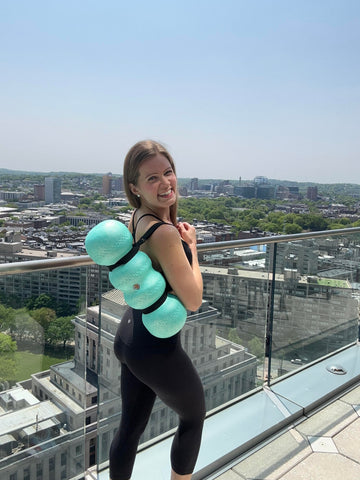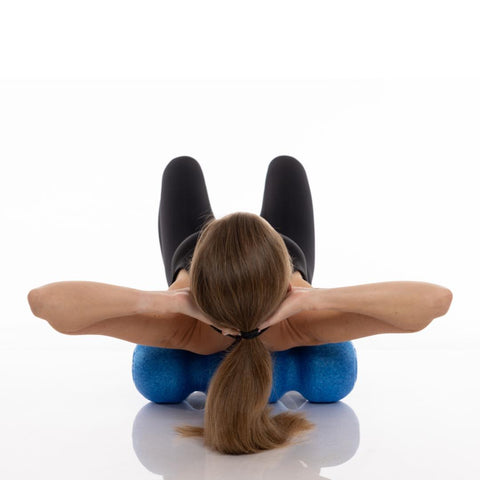

Physical activity is essential for maintaining a healthy lifestyle, but before you dive into your workout routine, it's crucial to properly prepare your body. Warming up before exercise not only reduces the risk of injury but also enhances performance and optimizes the benefits of your workout. And when it comes to warming up effectively, incorporating foam rolling with Rollga can take your pre-workout routine to the next level. In this blog, we'll explore the significance of warming up before physical activity, with a special emphasis on the benefits of foam rolling using Rollga.
Why Warm Up?
Warming up before physical activity is more than just a ritual; it's a critical component of any exercise regimen. Here's why:
1. Injury Prevention: A proper warm-up increases blood flow to your muscles, making them more pliable and less prone to injury. It also prepares your joints, ligaments, and tendons for the demands of exercise, reducing the risk of strains, sprains, and other injuries.
2. Improved Performance: Warming up primes your body for action, enhancing muscle function, coordination, and flexibility. This can lead to better performance during your workout, allowing you to lift heavier weights, run faster, and move with greater agility.
3. Enhanced Range of Motion: Dynamic warm-up exercises help improve your range of motion, allowing you to move more freely and effectively during your workout. This can lead to better form, reduced muscle stiffness, and increased efficiency in your movements.
4. Mental Preparation: Warming up not only prepares your body but also your mind for the task ahead. It helps you focus, mentally rehearse your workout, and get into the right mindset for optimal performance.
5. Faster Recovery: A proper warm-up helps activate your parasympathetic nervous system, which promotes relaxation and recovery. This can lead to faster post-workout recovery, reduced muscle soreness, and a lower risk of overtraining.
The Role of Foam Rolling
While traditional warm-up exercises like jogging and stretching are beneficial, incorporating foam rolling into your pre-workout routine can take your warm-up to the next level. Foam rolling, also known as self-myofascial release, involves using a foam roller to apply pressure to tight or sore muscles, helping release tension, improve flexibility, and enhance blood flow. Rollga, with its unique contoured design, offers several advantages over traditional foam rollers:
1. Targeted Muscle Release: Rollga's contoured shape and firm density allow for targeted muscle release, effectively reaching deep into tight or restricted areas while simultaneously protecting your bones, tendons, and spine. Applying pressure to specific muscle groups, Rollga helps release knots, adhesions, and trigger points, promoting better muscle function and range of motion.
2. Improved Blood Flow: Foam rolling with Rollga stimulates blood flow to the muscles, promoting nutrient delivery and waste removal. This increased circulation helps prepare your muscles for exercise, reducing the risk of injury and enhancing performance.
3. Enhanced Flexibility and Mobility: Regular foam rolling with Rollga can help improve flexibility and mobility by breaking up adhesions and scar tissue within the muscles and connective tissue. This leads to greater range of motion, allowing you to move more freely and effectively during your workout.
4. Pre-Workout Activation: Foam rolling serves as a form of neuromuscular activation, helping "wake up" your muscles and nervous system before exercise. By rolling out tight or inactive muscles, Rollga helps improve muscle recruitment and coordination, leading to better performance and reduced risk of injury.
5. Mind-Body Connection: Foam rolling with Rollga encourages mindfulness and body awareness, allowing you to tune into areas of tension or imbalance within your body. This heightened awareness can help you address imbalances, prevent injury, and optimize your movement patterns during exercise.
Incorporating Foam Rolling into Your Warm-Up Routine

Now that we understand the importance of warming up and the benefits of foam rolling with Rollga, let's explore how to incorporate this practice into your pre-workout routine:
1. Start Slow: Begin your warm-up with five to ten minutes of light cardio, such as jogging or cycling, to increase blood flow and elevate your heart rate.
2. Dynamic Stretching: Follow your cardio warm-up with dynamic stretching exercises that mimic the movements you'll be doing during your workout. Focus on dynamic movements that target major muscle groups, such as leg swings, arm circles, and hip openers.
3. Foam Rolling with Rollga: After dynamic stretching, spend five to ten minutes foam rolling with Rollga. Target major muscle groups such as the calves, quadriceps, hamstrings, glutes, and back. Roll slowly and deliberately over each muscle group, pausing on any areas of tightness or discomfort.
4. Active Warm-Up: Finish your warm-up with a few sport-specific drills or movements to further prepare your body for the demands of your workout. This could include exercises like bodyweight squats, lunges, or shoulder circles, depending on your chosen activity.
5. Hydrate and Fuel: Remember to stay hydrated and fuel your body with a balanced snack or meal before your workout to ensure optimal performance and recovery.
By incorporating foam rolling with Rollga into your warm-up routine, you can enhance your pre-workout preparation, reduce the risk of injury, and optimize your performance during exercise. Make foam rolling with Rollga a regular part of your warm-up ritual, and unlock your body's full potential for movement, strength, and vitality.
